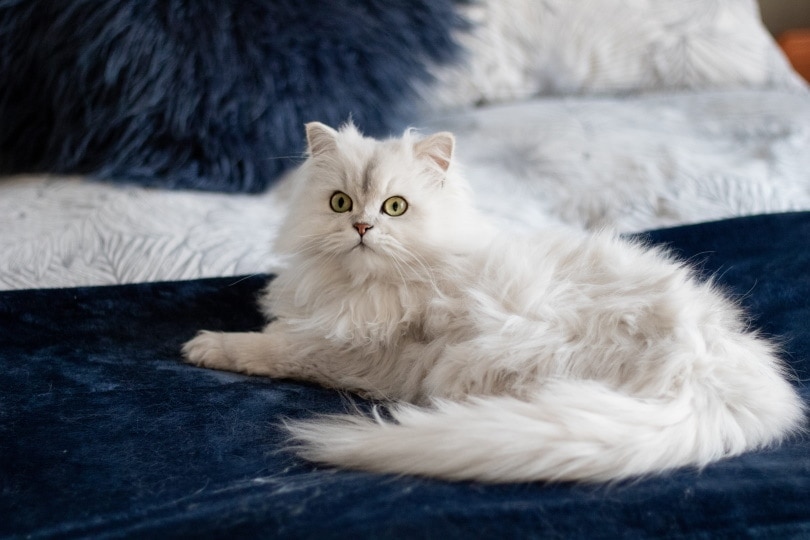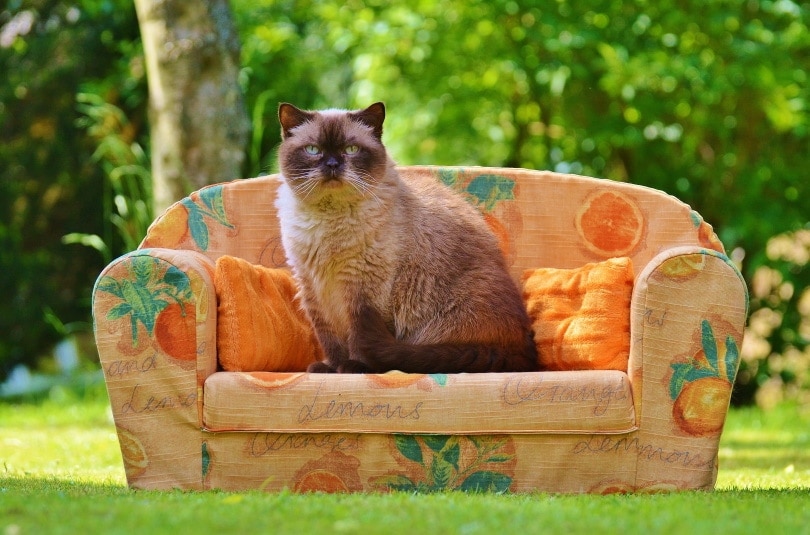Munchkin Tabby Cat – Pictures, Facts & History
Updated on
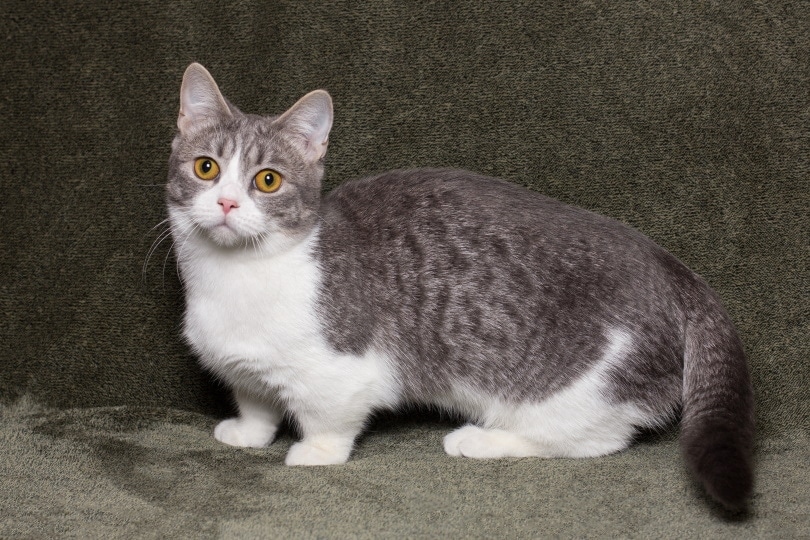
The Munchkin Tabby cat is instantly recognizable, thanks to its classic tabby coloration and trademark tiny legs. However, it is these legs that make Munchkins highly controversial in the cat-breeding world. Is it ethical to knowingly breed a cat with a deformity? This debate started in 1983 when the first Munchkin kitten breeder began mixing her short-legged stray with other cat breeds.
Keep reading to learn more about the fascinating (and controversial) history of the Munchkin Tabby cat.
The Earliest Records of Munchkin Tabby Cats in History
Short-legged cats have been around since the 1940s when a British vet named Dr. H.E. Williams-Jones wrote a report regarding four generations of stubby-legged cats. This report said these surprisingly short cats appeared to be healthy and that their height was the only difference between them and other cat breeds.
This line of early Munchkins disappeared during World War II, though the trait was seen in several places worldwide in the 50s, 70s, and 80s.
It wasn’t until 1983 when Munchkins began to be bred purposefully. A breeder named Sandra Hockenedel found a pregnant short-legged cat she named Blackberry. Hockendel gave one of Blackberry’s kittens, a male named Toulouse, to her friend Kay LaFrance. It is from these two cats that the Munchkin breed became established using a domestic cat as an outcross to prevent any genetic issues and ensure a diverse gene pool.
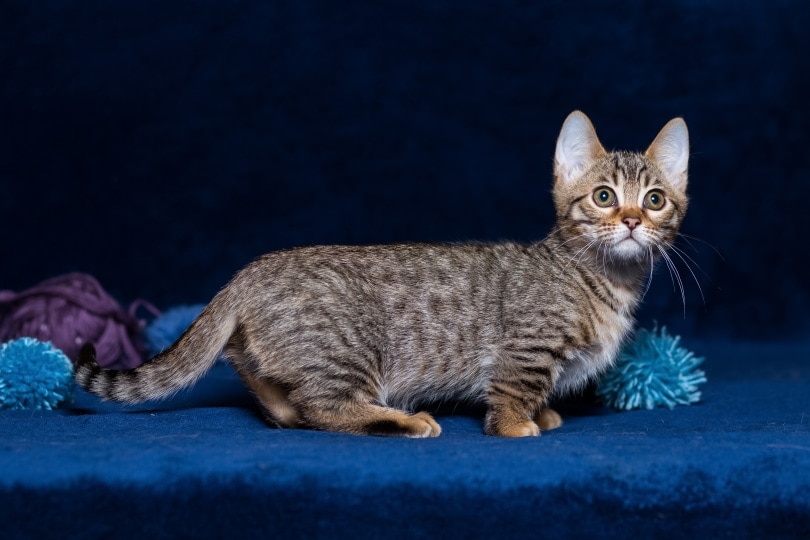
How Munchkin Tabby Cats Gained Popularity
The Munchkin Tabby first entered the public eye in the early 90s during a nationally televised cat show. They were immediately surrounded by controversy due to the genetic mutation that caused their shortened limbs. Critics believed the breed might face health and mobility issues.
However, Dr. Solveig Pflueger, a cat geneticist and Chairperson of TICA’s Genetics Committee, staunchly advocated for the Munchkin breed. Her research showed that the short-legged trait had an autosomal dominant mode of inheritance. Her studies also confirmed that the breed did not appear to have any spinal issues that afflict the Munchkins’ short-legged canine counterparts, Corgis and Dachshunds.
Dr. Pflueger’s work was instrumental in the Munchkin Tabby’s acceptance as a breed. Once TICA officially classified them as a breed, breeders were free to help the Munchkin Tabby gain wider acceptance.
That said, there are still many people who do not believe it is ethical to breed Munchkins.
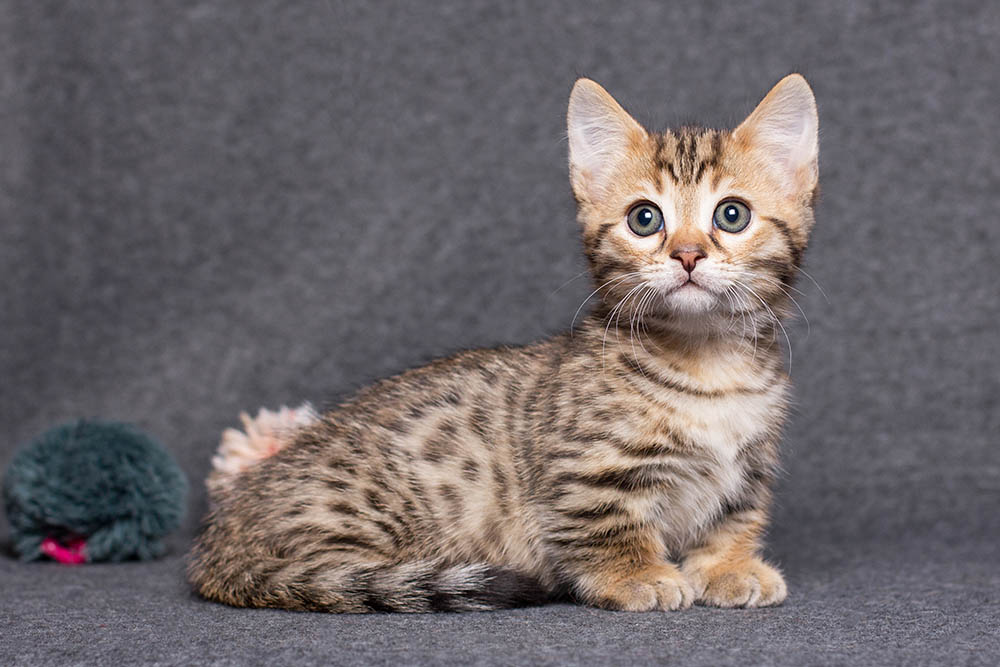
Formal Recognition of Munchkin Tabby Cats
The International Cat Association (TICA) accepted the Munchkin Tabby into its New Breed development program in 1994. This program’s purpose was to record any breed in an early developmental stage. To be registered as an official breed, there must be an accurate and precise chronicle of the progress and development. Critics of the Munchkin breed predicted that it would develop orthopedic issues not unlike what the Dachshund dog breed faces due to its short legs. Due to this controversy, Munchkins were not accepted in cat competitions.
Finally, in 2003, Munchkins received TICA Championship status.
At the time of writing, the only cat registries that recognize Munchkins are TICA and the Southern Africa Cat Council. Other cat registries have made it known that they do not support recognizing breeds that are based on abnormal development or genetic diseases.
Top 5 Unique Facts About Munchkin Tabby Cats
1. The genetic mutation that causes the trademark short legs is known as the “lethal gene.”
The dominant genetic mutation that caused the Munchkins’ short legs is called a “lethal gene.” This is because if a kitten were to receive the dominant gene from both its mom and dad, it would not survive. This is why breeders intentionally crossbreed Munchkins with other breeds since only one parent will pass on the mutation.
2. No one knows where the breed name originated.
Despite Munchkins being a relatively modern breed, no one knows for sure who coined the term “Munchkin.” Most people believe that the Wizard of Oz’s munchkin characters were the inspiration for the name, but not everyone believes that’s where it originated.
One story suggests that Pflueger’s daughter named one of her short-legged kitties Mushroom the Munchkin, and the name stuck. Another account suggests that Pflueger herself came up with the name on the spot when she appeared on Good Morning America and was asked the name of the breed.
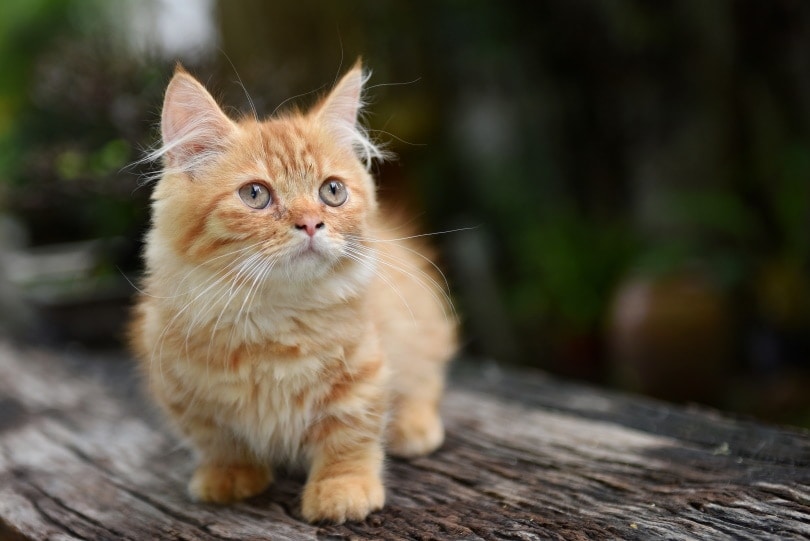
3. Munchkin kittens are incredibly expensive.
Since the breed is so rare, it should be no surprise that Munchkin kittens are priced incredibly high. This breed, despite its controversies, is highly sought after, so breeders charge between $700 and $2,500 on average. If you adopt a kitten with rare coloration or one that comes from a champion bloodline, you should expect to pay twice that or even more.
4. There are countless Munchkin crossbreeds.
Since breeders don’t mix two Munchkin parents to avoid passing on the “lethal gene” mentioned above, they must choose other breeds to cross with their Munchkins. The kittens will then take personality traits and physical characteristics from both parents. The Skookum is the result of mixing a Munchkin with a LaPerm. These kittens will have the Munchkins’ short legs and a curly coat from the LaPerm. The Bambino is a hybrid breed mixing Munchkins with Sphynx. The resulting kittens will have tiny legs and be hairless.
5. The word “tabby” doesn’t refer to a cat’s breed.
Many people believe that tabby cats are a specific breed, but the word tabby refers to a coat pattern. Many different breeds can produce kittens with tabby colorations. There are five patterns: classic, mackerel, spotted, patched, and ticked. The classic coat type features whorls that create a target shape on the cat’s sides and the trademark ‘M’ pattern on the forehead. Mackerel tabby cats have rings on their tails and legs with strips around its body. Spotted tabbies have spots instead of bands. A patched tabby has patches of dark brown and orange interspersed with the tabby pattern. Finally, ticked tabbies have fields of agouti hairs that give each hair two or more bands of pigmentation.
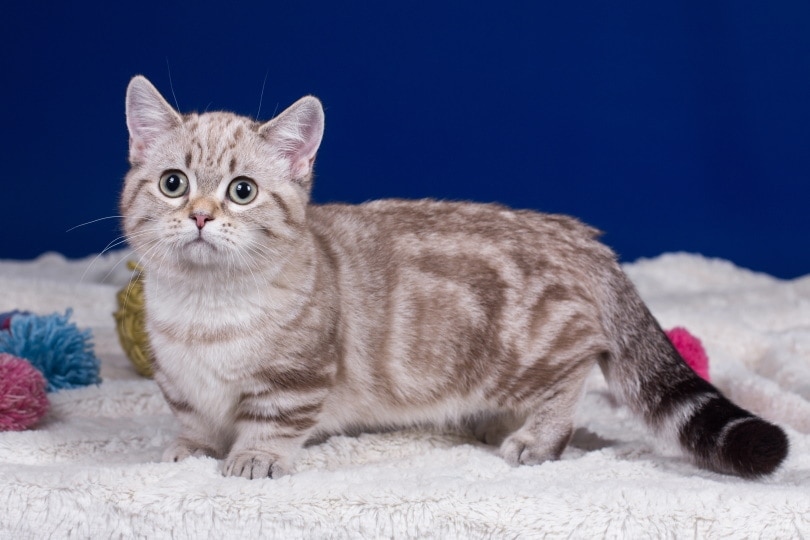
Do Munchkin Tabby Cats Make a Good Pet?
Munchkin Tabby kittens and cats make fantastic pets, though individual personality traits can vary depending on what breed the kitten was crossed with. They are generally very people-oriented and love spending time with their families. They’re very active and curious and never let their small size get in the way of adventures and exploration.
The breed gets along well with children and will love having a playmate that can keep up with their kitten-ish demeanor. The Munchkins’ fun-loving attitude makes it a great addition to families with other pets in the home.
Since Munchkins are so small, owners need to provide shorter cat trees to accommodate the tiny legs. In addition, Munchkins may be less agile than other breeds and potentially more prone to injuries if they find themselves on countertops or in bookshelves.
In Conclusion
Munchkin Tabbies are an adorable breed with a short but fascinating history. There certainly has been no shortage of controversies surrounding these stubby kitties, and, despite being around for almost 40 years, the debate over ethics continues. So, if you’re considering adopting a Munchkin, do a lot of research beforehand and choose a reputable breeder.
Featured Image Credit: SV_zt, Shutterstock


